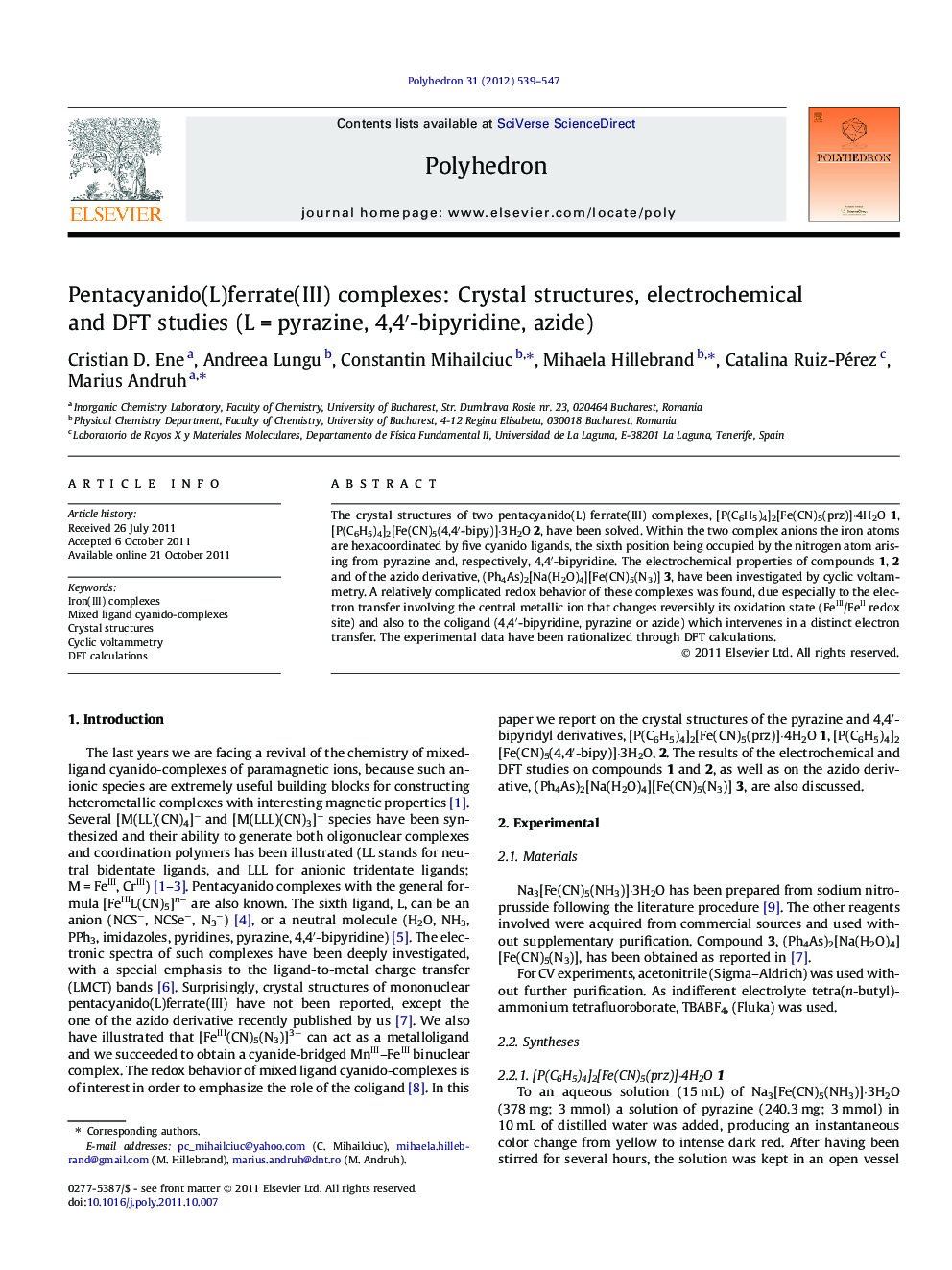| Article ID | Journal | Published Year | Pages | File Type |
|---|---|---|---|---|
| 1338222 | Polyhedron | 2012 | 9 Pages |
The crystal structures of two pentacyanido(L) ferrate(III) complexes, [P(C6H5)4]2[Fe(CN)5(prz)]·4H2O 1, [P(C6H5)4]2[Fe(CN)5(4,4′-bipy)]·3H2O 2, have been solved. Within the two complex anions the iron atoms are hexacoordinated by five cyanido ligands, the sixth position being occupied by the nitrogen atom arising from pyrazine and, respectively, 4,4′-bipyridine. The electrochemical properties of compounds 1, 2 and of the azido derivative, (Ph4As)2[Na(H2O)4][Fe(CN)5(N3)] 3, have been investigated by cyclic voltammetry. A relatively complicated redox behavior of these complexes was found, due especially to the electron transfer involving the central metallic ion that changes reversibly its oxidation state (FeIII/FeII redox site) and also to the coligand (4,4′-bipyridine, pyrazine or azide) which intervenes in a distinct electron transfer. The experimental data have been rationalized through DFT calculations.
Graphical abstractTwo pentacyanido(L)ferrate(III) complexes, [P(C6H5)4]2[Fe(CN)5(prz)]·4H2O 1, and [P(C6H5)4]2[Fe(CN)5(4,4′-bipy)]·3H2O 2, have been synthesized and structurally characterized by single crystal X-ray diffraction analysis (prz = pyrazine; 4,4′-bipy = 4,4′-bipyridine). The electrochemical behavior of the two mononuclear complexes and of a slightly different salt of the azido analogue, [As(C6H5)4)]2[Na(H2O)4][Fe(CN)5(N3)] 3, was investigated by cyclic voltammetry. DFT and TD-DFT calculations are performed in order to interpret the spectral data and the redox properties.Figure optionsDownload full-size imageDownload as PowerPoint slideHighlights► The crystal structures for two pentacyanido(L)ferrate(III) complexes are reported for the first time. ► The redox behavior of the two complexes is due to the reversible electronic transfer involving the metal ions. ► The redox behavior of the azido analog has been investigated as well. ► The coligands intervene in a distinct electron transfer. ► The experimental spectral and electrochemical data are supported by DFT and TDDFT calculations.
